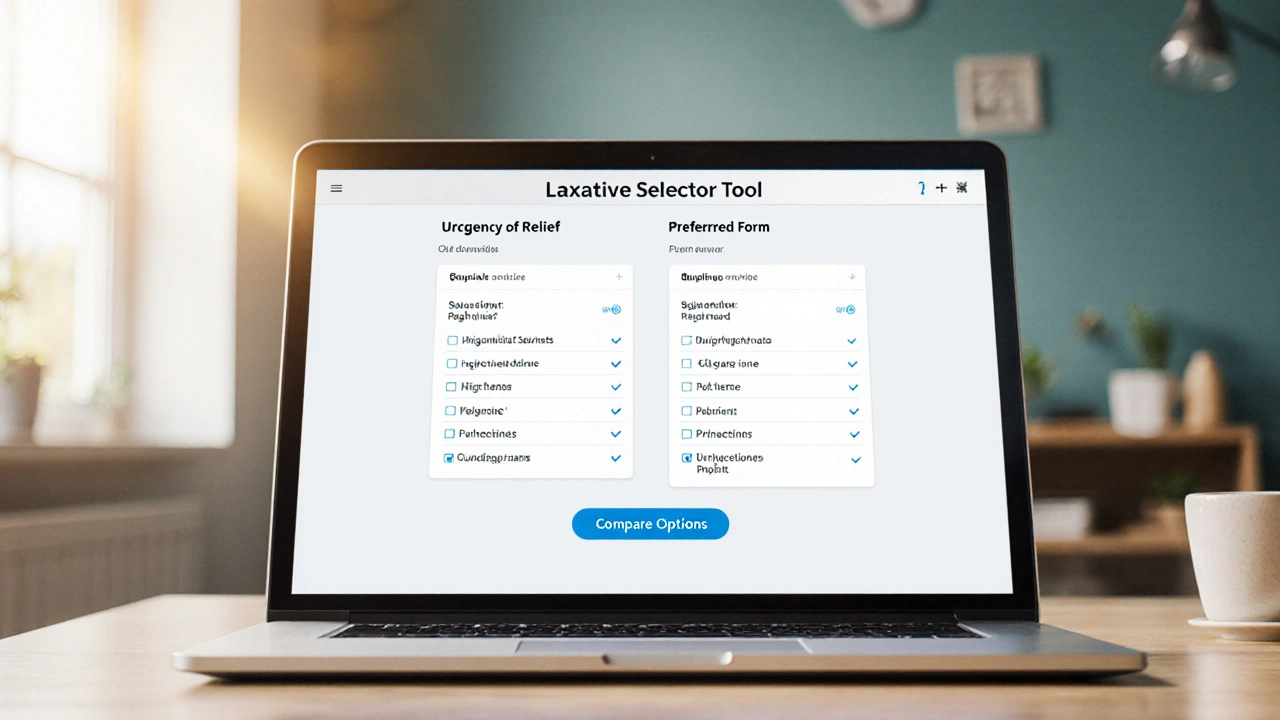Constipation Treatment: Practical Ways to Find Relief
When talking about Constipation Treatment, the set of methods and products that help restore regular bowel movements. Also known as relief for constipation, it covers everything from diet tweaks to prescription drugs. A common first step is to consider Laxatives, over‑the‑counter agents that stimulate gut motility. Another pillar is Fiber Supplements, powders or pills that add bulk and soften stool, which often work hand‑in‑hand with increased water intake. Probiotics, live bacteria that balance gut flora can further ease transit by improving digestion. For people who need stronger help, Prescription Medications, drugs like lubiprostone or linaclotide that target intestinal fluid secretion are available. Finally, Lifestyle Modifications, changes such as regular exercise, timed bathroom visits, and stress management round out a full‑body approach. Together these elements create a web of support: constipation treatment includes lifestyle changes, effective constipation treatment often uses fiber supplements, and prescription medications influence constipation treatment outcomes.
How the Pieces Fit Together
Most people start with the low‑risk options. Adding soluble fiber—like psyllium husk or oat bran—to meals can increase stool bulk without harsh side effects. The constipation treatment plan improves when you pair fiber with at least eight glasses of water a day; the fluid helps the fiber swell and move smoothly through the colon. If daily habits don’t move the needle, gentle laxatives such as stool softeners (docusate) or osmotic agents (polyethylene glycol) provide a mild push without causing cramping. For those who prefer a natural route, probiotic strains like Bifidobacterium lactis have shown promise in lowering transit time, especially when the gut microbiome is out of balance from antibiotics or a low‑fiber diet.
When symptoms persist beyond a couple of weeks, it’s time to evaluate prescription options. Medications such as lubiprostone activate chloride channels, increasing intestinal fluid and easing passage. Linaclotide works by boosting cyclic GMP levels, which also softens stool and reduces pain. Both drugs exemplify how modern prescription medication can directly target the physiological causes of constipation, offering relief where over‑the‑counter methods fall short. However, they require a doctor’s guidance because of potential side effects and interactions with other meds.
Beyond pills and powders, everyday actions have a huge impact. Regular walking or light jogging activates the abdominal muscles, nudging stool along the gut. Setting a consistent bathroom schedule trains the brain–gut reflex, making the body more likely to respond. Managing stress through breathing exercises or short meditation sessions can reduce the “fight‑or‑flight” response that often slows digestion. By weaving these lifestyle modifications into a daily routine, you create a supportive environment for any other treatment you choose.
Below you’ll find a curated collection of articles that dive deeper into each of these areas—from buying cheap generic meds safely to understanding how diet and exercise shape bowel health. Explore the guides that match your current needs, whether you’re looking for quick over‑the‑counter advice or a detailed overview of prescription options.

Duphalac (Lactulose) vs Common Laxative Alternatives - Detailed Comparison
Compare Duphalac (lactulose) with common laxative alternatives, see pros, cons, dosage, side effects, and choose the right option for your constipation.
view more